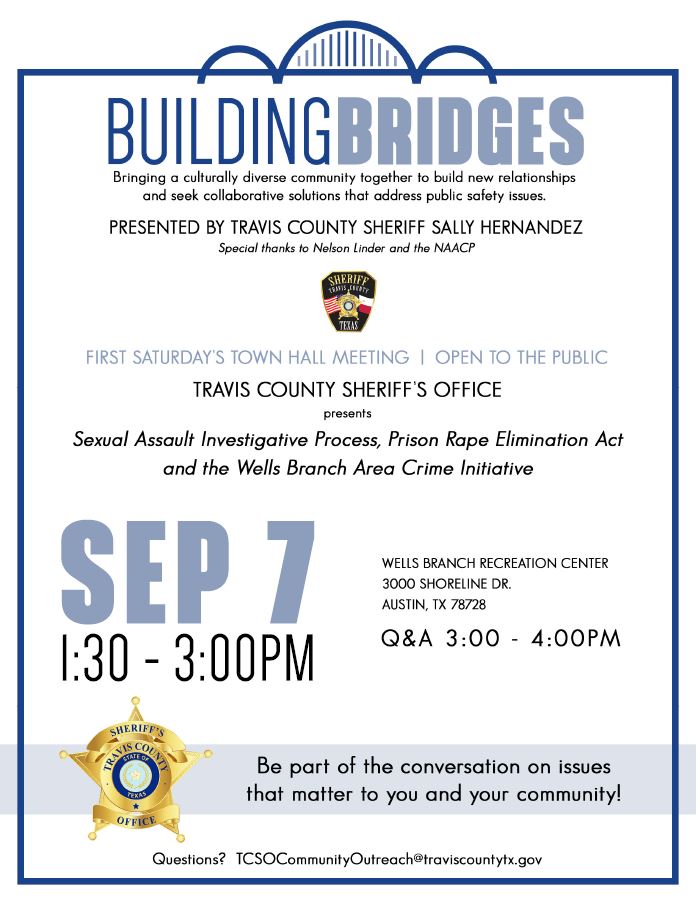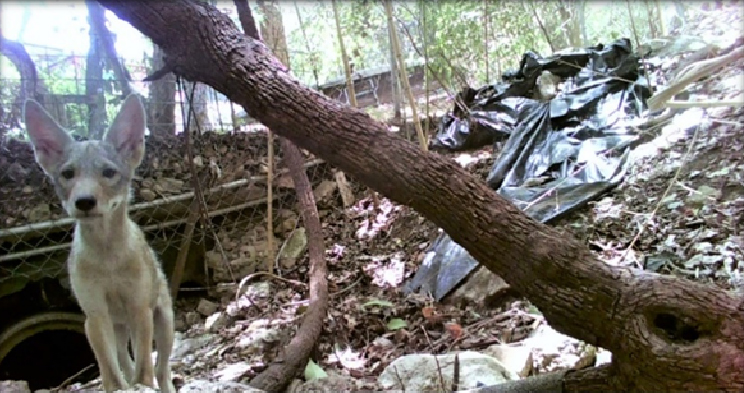Category Archives: Neighborhood Safety
Updated COVID-19 resources, from Commissioner Shea
As the number of COVID-19 cases continue to spike, I am urging everyone to do the simple things that we know work to slow the spread of COVID-19. Wear a mask, observe social distancing, practice good hygiene, and do not go out unnecessarily.
We also know that what helps keep us all safe is hurting our economy. Recognizing that many in our community are facing difficult economic burdens, Travis County has initiated several programs to help using federal CARES Act funding. Please see the list below of those and other programs that you or someone you know may find helpful.
- If you have a small business under 25 employees, and that business is located within Travis County (but outside the City of Austin), you may be eligible for up to $40,000 in grant assistance for those hurt by the pandemic. Visit www.traviscountythrive.com or Contact BCL of Texas by email at info@traviscountythrive.com or by phone at 512-994-2280 to take the first step by completing the pre-eligibility questionnaire.
- If you are struggling to pay rent or a mortgage anywhere in Travis County (including within the City of Austin), you may be eligible for rent or mortgage assistance for up to three months; that program starts on June 29th. For more information, please click here. (https://www.traviscountytx.gov/health-human-services/individuals-families/basic)
- If you are struggling to pay utility bills, you may be eligible for utility assistance. For more information, please click here. (https://www.traviscountytx.gov/health-human-services/individuals-families/basic)
- If you or family members are in need of hot meals, Keep Austin Together has a network of partner organizations that are dedicated to feeding our community; more information here (https://www.keepaustintogether.com/partner-organizations). Travis County also offers food pantry assistance for basic groceries, more information here. (https://www.traviscountytx.gov/health-human-services/community-centers)
- If you are facing eviction because you are unable to pay rent, County Judge Sam Biscoe has issued an order banning evictions until July 25th, 2020. For more information, the full order is available here.(https://www.traviscountytx.gov/images/docs/covid-19-order-10.pdf)
- If you are experiencing domestic violence, The SAFE Alliance can help. Learn more at safeaustin.org, or call them at 512-267-SAFE (7233) or text them at 737-888-7233.
- If you are struggling with mental health or substance use, Integral Care can help. Learn more at integralcare.org, or call them at 512-472-HELP (4357).
- If you think you may have contracted COVID-19, you can access free testing. Learn more from Austin Public Health(https://covid19.austintexas.gov) andCommUnityCare (https://communitycaretx.org/coronavirus-updates/coronavirus-updates.html)
- If you have the virus and need to quarantine away from others in your household, Austin & Travis County have partnered to establish an Isolation Facility for free, safe lodging for residents who cannot safely self-isolate. Learn morehere. (https://www.traviscountytx.gov/images/news/isolation_facility.pdf )
Some of these programs may be discussed Saturday, June 27th, in a community forum hosted by the City of Austin. English forum is at 11 AM and Spanish forum at 1 PM. Tune in to the livestream at facebook.com/AustinPublicHealth, or call 1-844-992-4726and enter access code 146 697 3290 to participate.
Please share this with anyone who may need these resources. While we cannot solve all of the issues caused by this pandemic, Travis County is doing what we can to help.
I sincerely hope this message finds you and your family well. We will get through this, with each other’s help and the support of our entire community.
With hope,
Brigid Shea
Travis County Commissioner, Precinct Two
Informational Coyote Meeting TONIGHT
Thursday, March 28 • 7-8pm
WB Community Center
2106 Klattenhoff
If you’ve ever had any questions about any of our WB wildlife, please attend this meeting! It’s only an hour and you’ll have answers to all your questions! If you are unable to attend, the meeting will be live streamed on the WBNA Facebook page.
The City of Austin/Travis County: No-Kill for Pets and Wildlife Alike
The City of Austin does not remove or relocate healthy native wildlife. Instead, the City of Austin/ Travis County’s Wildlife Officers work with residents to provide tailored, humane, and long-term solutions to resolve conflict. It is important to report any concerning behavior to 311 so the Wildlife Officer can monitor activity.
During the winter months, coyotes may be more active as they find mates, their own territory and food. Coyotes are typically most active at dawn and dusk, though they may be seen hunting or traveling during daytime hours. During March-November, coyotes will have pups in the den. Coyote behavior is influenced by season. During denning season, coyotes may see large dogs a threat to their pups. Coyotes may use a flushing technique to protect their pups. Hazing is a technique used to influence coyote behavior throughout the country. Evidence suggest that hazing is more effective than lethal measures. It is really simple to haze a coyote to reinforce natural behavior. We want to share space, but not time. Please read the information below for more details about pet safety, hazing, flushing, and attractants.
Pet safety:
- Keep small pets inside if possible and monitor them when outside (specifically during twilight/night time hours)
- Avoid using extendable leashes; walk dogs on leashes that are 4-6 feet in length
- Avoid letting dogs explore vegetation that you cannot see through
- Provide secure shelters for poultry or other animals living outside
- Feed pets indoors
Hazing: Encouraging coyotes to avoid contact with people. Hazing should be exaggerated, assertive and consistent.
- Make eye contact, yell and wave your arms. You want the coyote to know the behavior is directed at it. Waving your arms will make you seem bigger.
- Use noisemakers such as whistles, air horns, a “shaker” can full of small rocks (or something similar) or bang something like pots and pans together.
- If the coyote does not leave immediately, throw non-edible objects near it. You can use something like small rocks, sticks or tennis balls. Remember, the goal is not to hurt the coyote, you’re trying to get it to leave and associate humans with unpredictable, “scary” behavior.
- Spray the coyote with a water hose, water guns or spray bottles. You can also use a mixture of water and vinegar, pepper spray or bear repellant.
- If the coyote does not leave after escalating hazing efforts, maintain eye contact and back away slowly. Notify 311 immediately.
- Don’t haze if a coyote appears sick or injured, is cornered or displaying acceptable coyote behavior. Please call 311 to report sick or injured animals.
Flushing Behavior:
- If you are walking your dog near a den, a coyote may perform a flushing behavior that may seem alarming. Coyotes may see your dog as a potential threat to the pups in the den so they may walk behind you until you are out of the area. It is always about the dog, not the person. Report this behavior to 311.
- Do not run or turn your back. Just leave the area as soon as you can and keep your pets secured
- Avoid walking in that area and educate your neighbors
Haze:
- When a coyote is:
- Active during the day around people or in high traffic areas such as a park, neighborhood streets/yards, parking lots, dog parks, or school grounds
- Walking along your fence line with your dogs in the backyard
- On your property with you or your pets present
Do not to haze:
- At night when there is not activity
- When a coyote is in its natural habitat such as a greenbelt, preserve, open field, or near a creek
- When you are experiencing the flushing behavior. Coyotes are protective of their den and we recommend leaving the area as soon as possible.
Reliable Food Sources: To keep coyotes and other wildlife wild, we can follow a few, simple preventative measures:
- Always keep trash and compost in a secure bin
- Keep your barbecue grill clean
- Keep the area under your fruit and nut trees free of droppings (a coyote’s diet can be up to 40% fruit in Texas)
- Avoid feeding pets outdoors (if you must feed pets outside, feed during the daytime and remove the uneaten food as soon as the animal has finished)
- Feeding wildlife and feral cats can attract coyotes. In addition to coyotes eating the food, mice and other animals will be drawn to leftovers, which can subsequently attract predators such as foxes and coyotes.
For more information on hazing, attractants or reliable food sources, and pet safety, visit: http://www.austintexas.gov/department/coyotes-central-texas
For immediate assistance, call 311. To schedule a one-hour presentation with a Wildlife Educator, call (512) 978-0514.
 Statistical Analysis of Wells Branch Initiative
Statistical Analysis of Wells Branch Initiative
Provided by Kristen Dark, Sr. Public Information Officer, Travis County Sheriff’s Office
Throughout October and November of 2017, TCSO conducted an initiative focused on reducing crime in the Wells Branch community. The six-week initiative which took place from October 8 – November 15, 2017 consisted of both undercover and overt operations. On November 28, 2017, TCSO hosted a Town Hall meeting to share details of the completed operation with residents. At that meeting TCSO Captain Craig Smith promised attendees and media representatives that our agency would release statistical analysis of crime in the area once December data had been collected and analyzed, to present a picture of where things stood the month after the initiative ended.
JULY 15 – AUGUST 15, 2017 (Pre-initiative Reports)
- Violent Crimes
- Robbery: 4
- Assault: 6
- Aggravated Assault: 2
- Narcotics: 24
- Property Crimes
- Burglary of Residence: 8
- Auto Theft: 11
- Burglary of Vehicle: 27
- Theft: 21
- Traffic Offenses
- DWI: 8
- Collisions: 27
NOVEMBER 15 – DECEMBER 15, 2017 (Post-initiative Reports)
- Violent Crimes
- Robbery: 1 75% Decrease
- Assault: 4 33% Decrease
- Aggravated Assault: 1 50% Decrease
- Narcotics: 17 29% Decrease
- Property Crimes
- Burglary of Residence: 4 50% Decrease
- Auto Theft: 5 55% Decrease
- Burglary of Vehicle: 11 59% Decrease
- Theft: 11 48% Decrease
- Traffic Offenses
- DWI: 3 63% Decrease
- Collisions: 25 7% Decrease
It’s important to note that this initiative is not an indication that Wells Branch is an unsafe neighborhood. It’s a densely populated area where crime rates had begun to show an increase. The goal was to reduce crime through a concentrated effort. These results were accomplished through community engagement, education and collaboration. During this initiative TCSO worked closely with the Austin Police Department, Pflugerville Police Department and the Texas Department of Public Safety. We will continue to engage the community and work together to keep crime rates low.
TCSO started these initiatives in 2017. The first concentrated on the Del Valle area. These operations will be an ongoing practice in the months and years to come and will target areas where statistical analysis shows an uptick in criminal activity.


